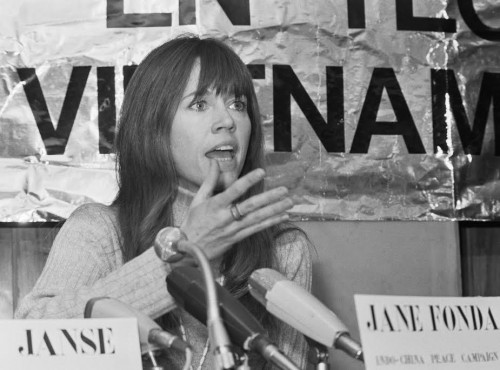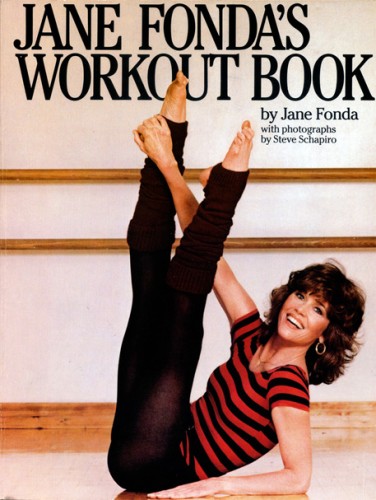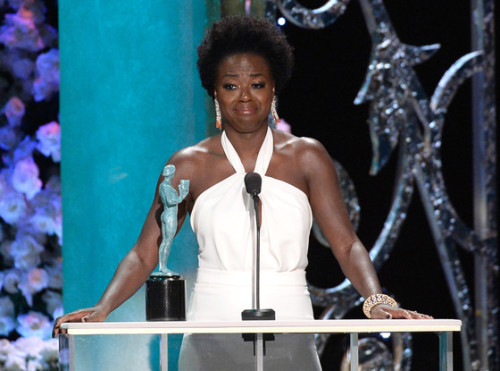
This guest post by Rachel Wortherley appears as part of our theme week on Unlikable Women.
“Thank you … for thinking that a sexualized, messy, mysterious woman could be a 49-year old, dark skinned, African-American woman who looks like me.” – Viola Davis, Screen Actors Guild Awards (2015).
Viola Davis resounded these words in her acceptance speech at the 21st Annual Screen Actors Guild Awards when she won for “Outstanding Performance by a Female Actor in a Drama Series” for the ABC hit series, How to Get Away With Murder (2014). Davis’ speech shows how images of Black women in television are only beginning to change. Before the inception of ABC’s Scandal (2012), a Black woman in a lead television role had not existed since 1968’s Julia starring Diahann Carroll. Since Scandal, Fox’s Sleepy Hollow (2013) and How to Get Away With Murder have been allowed to flourish on network television. Viola Davis’ portrayal of Annalise Keating is brass, vulnerable, sexy, and threatening–all of which is the complete opposite of misconceived images of Black women as docile, maternal, and continuously doting. She is usually a figure who serves others while sacrificing her personal wants and needs.
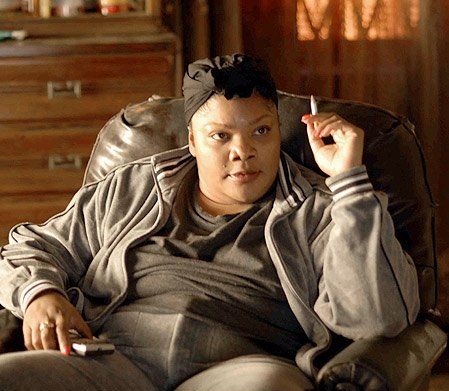
When I searched my mental rolodex for Black female characters in film or television who are unlikable my mind continued to circle. I was lost. With the exception of Mary Lee Johnston (played by actress and comedian Mo’Nique) in the 2009 Lee Daniels’ film Precious, I could not name one character. Writers and executives appear to have an inherent fear of writing women of color as unlikable, even evil. Often a character who looks and feels like Annalise Keating is ascribed as the “angry Black woman.” In fact, Alessandra Stanley, writer for the New York Times, attributed this ignorance in her article, “Wrought in Rhimes’s Image: Viola Davis Plays Shonda Rhimes’s Latest Tough Heroine,” in which she accuses the series’ executive producer Shonda Rhimes and Annalise Keating of being angry Black women. Meredith Grey (Grey’s Anatomy) and her angry rants should takes notes, lest she be an “angry white woman.”
Then I remembered two recent characters from television. Yvonne “Vee” Parker of the Jenji Kohan, Netflix series, Orange is the New Black (2013) and Erin Gray of Neil Cross’ BBC series, Luther. Kohan and Cross create two women, whom also happen to be Black, who are unlikable and even volatile in the perception of general audiences.
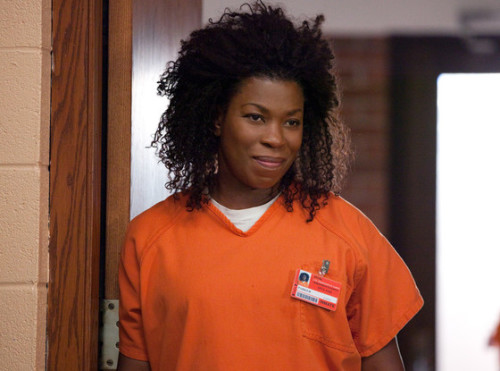
Jenji Kohan is masterful in her conception of Vee because the quality that makes her unlikable is her ability to be likeable. In Season 2, Episode 2: “Looks Blue, Tastes Red,” we flashback to see Tasha, a chubby, little, 11-year old Black girl croons the Christina Aguilera ballad “Beautiful” to prospective adoptive parents. She can recite the periodic table and memorize up to 56-digits of pi. Yet, despite this they choose another child. Suddenly a tall, dark figure, big hair, in sunglasses approaches, sits, and lights a cigarette. She looks over and Tasha and recognizes that she is from a group home. The woman asks if Tasha cares to learn “the trade” (the drug trade) and Tasha refuses. She wants to find her “forever family.” In that moment, Vee awakens Tasha to the reality that she may die waiting for her forever family and in the same moment Tasha becomes “Taystee Girl,” a nickname that will follow her into Litchfield Prison.
A couple of scenes later a teenage Taystee, who dons a uniform from the local fast food restaurant, is headed to work. Once again, Vee approaches Taystee to convince her to join the business. Here, Taystee continues to be resistant. She wants to make her own way. However, the third time, Vee does not approach her, rather Taystee goes to her. Taystee, crying and desperate, turns to Vee lamenting that her situation in the group home has worsened. This time around, Vee rejects her until Taystee proves that she can be an integral asset to the business. As in the beginning of the episode, she shows off her math skills as she did for the adoptive parent and this time it works. Vee takes Taystee under her wing.
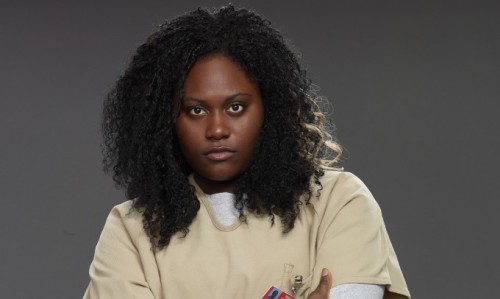
Kohan uses these flashbacks in order to demonstrate the humanity beneath the face of prison. In Taystee’s flashback audience see that she was a lonely child searching for her “forever family” but she unfortunately found refuge in the wrong person. A pivotal flashback occurs when Taystee arrives from the craft store with googly eyes, owl, and horse stamps. Her idea is to label their heroin with a stamp in order to market it better. Despite the context of the conversation, what audiences learn is that Taystee is a businesswoman with bright ideas who wants to move beyond working for a “connect.”
As Taystee vocalizes this information, Vee is in the kitchen cooking dinner for R.J. (another young employee of Vee) and Taystee. In this moment, Taystee gazes at Vee as though she is a God-send. Here, Vee is the nurturing, maternal figure that Taystee has always wanted. Another scene in which Vee’s maternity is showcased occurs in real time at Litchfield prison. Vee quickly becomes close to Suzanne who is known to fellow inmates as “Crazy Eyes.” Suzanne who is afraid of Piper—due to Piper’s brutal beat down of another inmate in the previous season—becomes withdrawn around her. Vee sees this and tells her: “at the end of the day, you are a garden rose and that bitch is a weed.” That moment allows for Suzanne to “see” herself for the first time and it solidifies her loyalty to Vee.
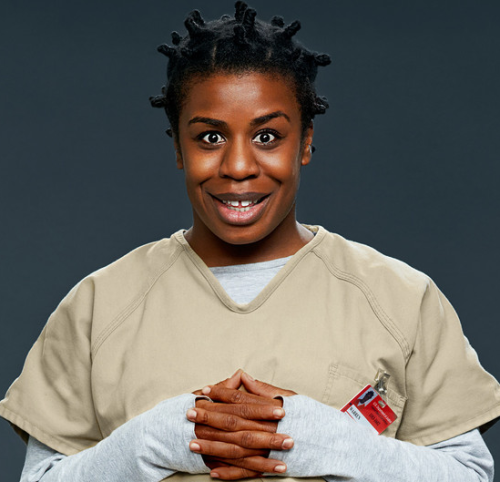
Vee’s declaration to Suzanne is the same method that allows her to insert herself into the lives of the other inmates: Black Cindy, Janae, and to some extent Poussey. Each of these women has experienced some type of loss in their past. Janae, a promising career in track and field, Black Cindy, her daughter, and Poussey her true identity. Vee is their opportunity to prove their worth at the prison amongst the women; to them she sees their purpose. She also becomes the maternal figure of the Black women in the prison where that role is vacant. The Hispanic inmates have Gloria, while the Caucasian inmates have “Red.” Vee’s ability to charmingly seduce individuals is what makes her most diabolical. Her maternity is sinister, a quality that is comparable to the description of the elms in playwright Eugene O’Neill’s play, Desire Under the Elms. Like the elms, Vee appears to “protect, yet subdue.” Vee predatorily isolates the group, specifically Taystee, from Poussey who quickly sees Vee as a danger. Vee uses her feelings of isolation in order to hurt her. For audiences the separation of Taystee and Poussey is the first offense. The second and third come to fruition in the form of injuring Red and allowing Suzanne to take the blame. As Black Cindy attempts to stand up to her, she and Janae quickly see that Vee’s physical threats are to be taken seriously. She is willing to discard of anyone in order to get what she wants. Just ask Taystee’s friend R.J. whom she sleeps with and murders all in one night.
On the flipside of this is DS/DCI Erin Gray on Neil Cross’ BBC series Luther. Erin is the only woman on the police force which includes Detective Chief Inspector John Luther (Idris Elba). She is meticulous, driven, and she follows rules by the book. Despite her name, there are no “gray” areas in her concept of the law, just black and white. Erin is the only woman in newly formed “Serious and Serial Crime Unit” therefore has to prove herself as a woman and a woman of color. The first time audiences meet her she asks DS Justin Ripley, Luther’s partner, in reference to Luther’s police tactics: “is he really as dirty as they say?” Ripley quickly comes to his defense and continues to do so as the season progresses.
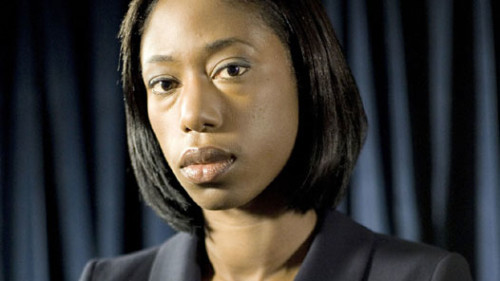
Erin continues to question Luther’s methods. A prime example occurs when Luther orders her and Justin to confiscate the mobile phones of the public at a crime scene investigation. Erin questions, “On what grounds?” However, Justin explains that to Luther “confiscate” means something different. Erin does not completely understand Luther’s policing nor agree with them. This comes to a head when she witnesses Luther breaking into DSU Schenk’s computer files—in actuality he is obtaining files to set a teenaged prostitute free from her employer. As a result, she becomes suspicious and reports the case. However, she alerts Justin to her concerns, inadvertently allowing him enough time to wipe the history from Schenk’s computer. As a result, Erin is embarrassed and humiliated in front of her superior. She leaves the Serious and Serial crime unit in disgrace.
This moment is what allows Gray to join the unit that investigates police corruption and she is promoted to Detective Chief Inspector. She joins forces with formerly retired DS George Stark to investigate Luther and bring a case against him. In the process, Gray attempts to convince Ripley that Luther needs to be stopped. Season three is when Gray begins to become unlikable for audiences. According to most audiences Gray is labeled as “annoying,” “grating,” and a “stupid bitch.” Upon my first viewing, I also found Gray unlikable. However, now I understand why audiences dislike her.

Gray’s biggest fault is that she goes against not just the main character, but a multitude of characters who support Luther. One of them being the beloved psychopath Alice Morgan (Ruth Wilson). Audiences are quick to love the deliciousness of a possible intimate relationship between Alice and Luther and seemingly overlook the fact that when we meet her she murders her parents and the family dog, and gets away with it. She is clever, delightful, and continuously fights for John Luther. Alice like many of the women on the show has been saved by Luther (he cunningly helps Alice escape the mental institution). Erin is threatening because even as she faces the barrel of a gun in season three, she does not need to be saved by John. Erin’s ability to be independent of the main character is what makes her unlikable. She works to better herself and the law. It is also significant that the majority of women in the shows history who need saving, including the victims, are Caucasian women. While I am not advocating that Black women or women in general, should be diminished to damsels in distress, it is obtuse that a majority of victims are of a specific demographic and gender. In a sense this disparity establishes how audiences are supposed to see Erin Gray in comparison to others. Because she is not a victim, she is other.
Though Vee’s story on Orange is the New Black is closed by Rosa, the escaped inmate who runs Vee over with the prison van, seemingly killing her, Erin’s is very much open. In the aftermath of her attack, audiences last see Erin on a stretcher, shell shocked, and speechless. For audiences her non-death may have been a disappointment, but she has been scared straight into ultimately believing in Luther. Viewers of Orange is the New Black and Luther have equally been satisfied in some capacity by each woman’s demise.

Claire Underwood, Maxine Lund, Mavis Gary, and Hannah Horvath are just a few of the many unlikable female characters in film and television. They are met with distaste, yet this quality places them under a microscope because they are often people we know. Viola Davis’ statement in congruence to Vee Parker and Erin Gray demonstrate that minorities, whether they are Black, Hispanic, or Asian, want to diversify their roles in film and television. While the general landscape of roles for women of color appear to be expanding on television, film continues to fall behind in the diversity of characters. She should be liked and disliked, loathed and loved, and the bitter pill to swallow, yet the one that we need.
Rachel Wortherley is a graduate of Iona College in New Rochelle, New York and holds a Master of Arts degree in English. Her downtime consists of devouring copious amounts of literature, television shows, and films. She hopes to gain a doctorate in English literature and become a professional screenwriter.










